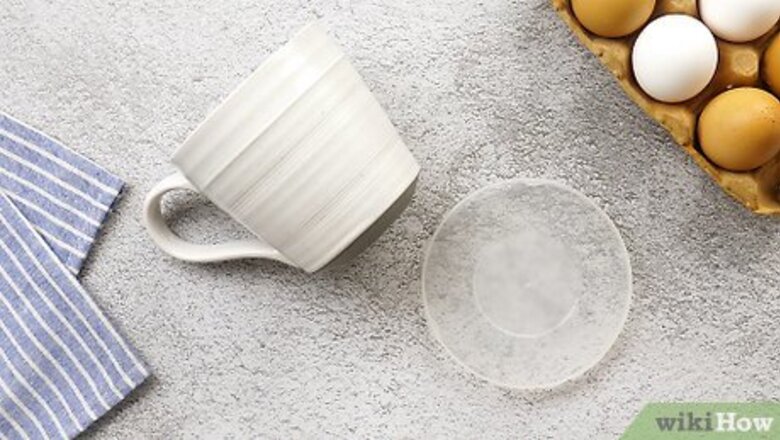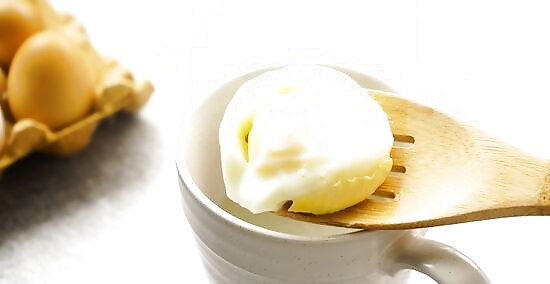
views
X
Research source
Using the microwave to poach an egg is the easiest way to make a stunning poached egg.
Preparing Your Ingredients

Get a microwave safe mug and lid. Most plastic, glass, or ceramic mugs and lids will say “Microwave Safe” on the bottom. Use a mug and lid that specifically says microwave safe. Do not use metal materials or foil in the microwave. If using a mug, a mug with a tapered bottom will give a better result than a straight mug as the taper will collect the egg proteins together better.

Fill the microwave safe mug with ½ cup of cold water from the tap. Using a measuring cup, measure out ½ cup of water. Pour the water into the mug.

Crack the egg into the mug. Using the side of the mug, tap the egg firmly once or twice to break through the shell, taking care to not break the yolk. Pry open the egg halves, and let the egg fall into the mug of water and make sure to prick the yolk with a fork to prevent mess.

Ensure the egg is completely submerged in water. If the egg is not submerged in water, use the measuring cup to add another ¼ cup of water. The egg should be submerged now. Get creative with easy poached eggs. "I love having poached eggs for breakfast but never wanted to deal with the hassle of poaching them on the stove. This microwave method is so easy and fast — it's perfect for busy mornings before work when I'm rushing out the door. I've started experimenting with different-shaped mugs and adding a splash of vinegar or lemon juice to the water to get fun, restaurant-worthy results right at home. This simple technique makes it easy to jazz up my breakfasts." - Tikya B. Avoid rubbery eggs with a fork prick. "In the past, when I tried microwaving eggs, they would sometimes turn out rubbery and overcooked. But after reading the tip to prick the yolk with a fork before cooking to release some of the liquid, my eggs now come out perfect every time. That little poke makes all the difference. No more bouncy, tough eggs — just tender poached eggs with runny yolks using this easy microwave hack." - Mary C. Adjust cook times for different microwaves. "The microwave cook times were a little off for my 1100-watt microwave. I found 45 seconds works better as the initial cooking time in my more powerful microwave. Checking and adjusting the time is important. Now I have the method down pat for my appliance." - Sue S. Poach eggs in creative vessels. "Instead of using a mug, I tried poaching my egg in a small glass bowl. The wider shape let me add other ingredients like tomatoes or spinach to make a loaded poached egg. Getting creative with the vessel opened up lots of easy breakfast options." - Maria B. Have a story our readers should hear? Share it with 1 billion+ annual wikiHow users. Tell us your story here.
Cooking the Poached Egg

Microwave the egg on high for one minute. Place the mug in the microwave, and cover it with the microwave safe lid. Then, close the door and microwave the egg for one minute on high.

Make sure the egg is cooked before serving it. Open the microwave door and remove the carefully lid. The egg white should be firm, but the yolk should still be runny. If the egg white still appears runny even after 1 minute, close the microwave door and add 15 seconds. Check the egg again, ensuring the egg white is not runny.

Remove the egg with a slotted spoon and place on a plate. Now that the egg is done, remove the lid carefully, and remove the mug from the microwave. Use a slotted spoon to gently place the egg on a plate or in a bowl. If you leave the egg in the hot water, the egg will continue to cook.

Salt and pepper the egg to taste. Add a dash of salt and pepper to your perfectly poached egg. Serve as desired.


















Comments
0 comment